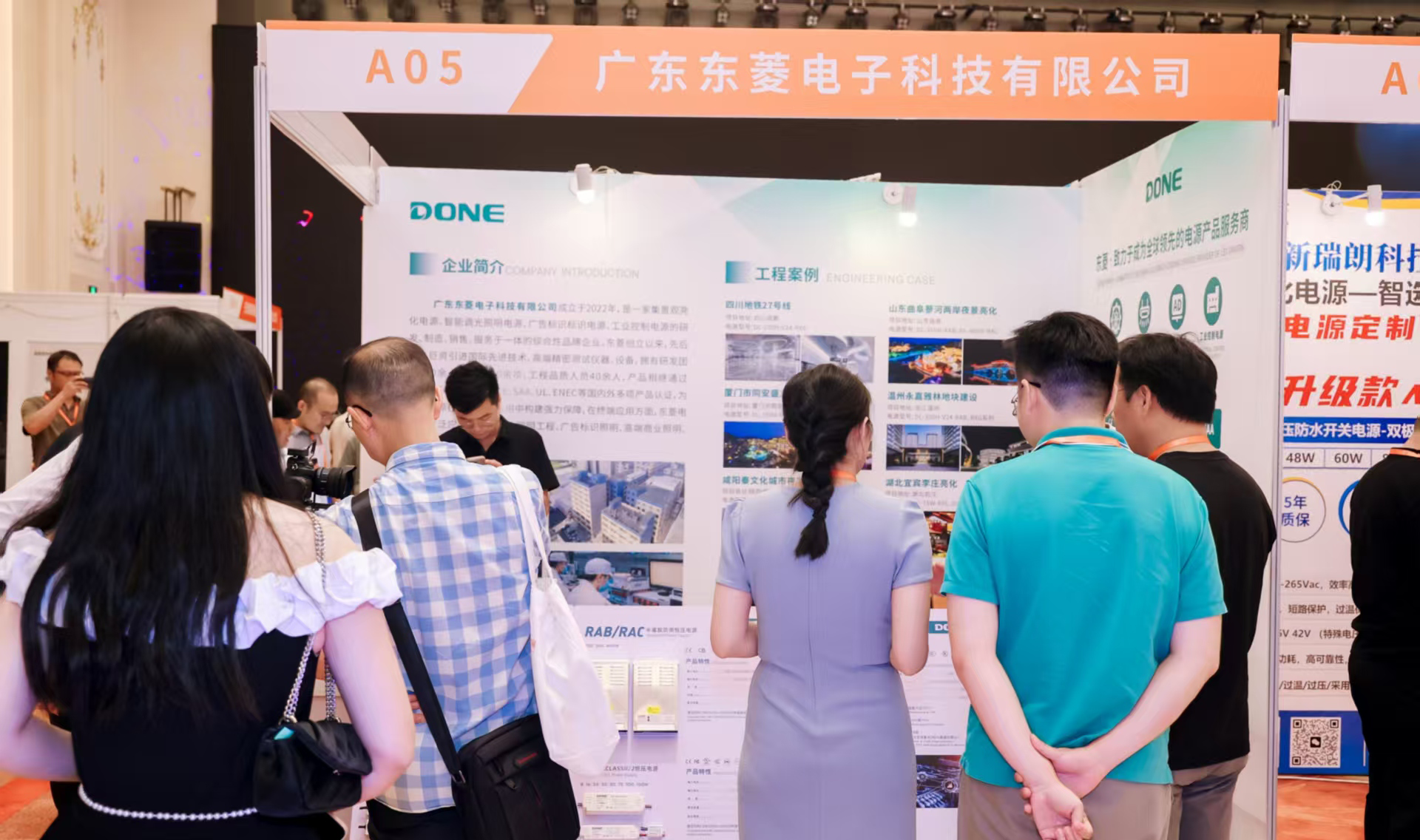Understanding the Importance of LED Drivers in Modern Lighting Solutions
2025-10-16
Understanding the Importance of LED Drivers in Modern Lighting Solutions
Table of Contents
1. Introduction to LED Drivers
2. What Are LED Drivers and Their Role in Lighting?
3. The Benefits of Using LED Drivers
3.1 Enhanced Energy Efficiency
3.2 Improved Lighting Quality
3.3 Extended LED Lifespan
4. Types of LED Drivers
4.1 Constant Current LED Drivers
4.2 Constant Voltage LED Drivers
5. Key Facto
Understanding the Importance of LED Drivers in Modern Lighting Solutions
Table of Contents
1. Introduction to LED Drivers
2. What Are LED Drivers and Their Role in Lighting?
3. The Benefits of Using LED Drivers
3.1 Enhanced Energy Efficiency
3.2 Improved Lighting Quality
3.3 Extended LED Lifespan
4. Types of LED Drivers
4.1 Constant Current LED Drivers
4.2 Constant Voltage LED Drivers
5. Key Factors to Consider When Choosing an LED Driver
5.1 Power Requirements
5.2 Compatibility with LED Fixtures
5.3 Dimming Capabilities
5.4 Environmental Considerations
6. Common Applications of LED Drivers in Modern Lighting
6.1 Residential Lighting
6.2 Commercial Settings
6.3 Outdoor and Architectural Lighting
7. Troubleshooting Common LED Driver Issues
8. Future Trends in LED Driver Technology
9. FAQs about LED Drivers
10. Conclusion
1. Introduction to LED Drivers
In recent years, the demand for energy-efficient lighting has soared, making **LED technology** a driving force in modern lighting solutions. However, the effectiveness of LED bulbs heavily relies on a crucial component known as the **LED driver**. Understanding the importance of LED drivers is essential for anyone involved in the design, installation, or maintenance of lighting systems.
2. What Are LED Drivers and Their Role in Lighting?
LED drivers are power supply devices that regulate the energy supplied to LED lights. Unlike traditional incandescent bulbs that can directly connect to the power supply, LEDs require a specific voltage and current to operate efficiently. LED drivers ensure that these requirements are met, preventing damage to the LEDs and ensuring optimal performance.
The primary functions of LED drivers include:
- **Voltage Regulation**: Maintaining a consistent voltage output to prevent LED flickering or failure.
- **Current Control**: Ensuring that the LED receives the correct amount of current, which is critical for its performance and longevity.
- **Protection Features**: Safeguarding LEDs from surges and short circuits, enhancing reliability and safety.
3. The Benefits of Using LED Drivers
Utilizing LED drivers comes with numerous advantages that contribute to the overall effectiveness and efficiency of modern lighting solutions.
3.1 Enhanced Energy Efficiency
One of the standout benefits of LED drivers is their ability to significantly improve energy efficiency. By providing the correct amount of power to LEDs, these drivers minimize wasted energy, leading to lower electricity bills and a reduced carbon footprint.
3.2 Improved Lighting Quality
LED drivers help maintain stable lighting output, reducing issues such as flickering and color inconsistency. This enhances the overall quality of light produced, which is particularly important in settings where color accuracy is critical.
3.3 Extended LED Lifespan
Properly functioning LED drivers can extend the lifespan of LED fixtures. By regulating voltage and current, these drivers prevent overheating and other stress factors that can lead to premature failure.
4. Types of LED Drivers
Understanding the different types of LED drivers available is essential for selecting the right one for your application.
4.1 Constant Current LED Drivers
Constant current LED drivers provide a steady current to the LEDs, making them ideal for applications where the LED's performance is sensitive to current fluctuations. These drivers automatically adjust the voltage to maintain a consistent current output.
4.2 Constant Voltage LED Drivers
In contrast, constant voltage LED drivers supply a stable voltage to the LED fixtures. This type is suitable for installations where multiple LEDs are connected in parallel, ensuring they all receive the same voltage level.
5. Key Factors to Consider When Choosing an LED Driver
Selecting the right LED driver can significantly impact the performance and efficiency of your lighting system. Here are key factors to consider:
5.1 Power Requirements
Determine the total wattage needed for your LED fixtures. Ensure that the chosen driver can handle the combined wattage to prevent overloads.
5.2 Compatibility with LED Fixtures
Verify that the LED driver is compatible with your specific fixtures. Some LEDs may require specialized drivers to function correctly.
5.3 Dimming Capabilities
Consider whether you need dimmable lighting. Not all LED drivers support dimming, so choose one that meets your requirements if variable brightness is desired.
5.4 Environmental Considerations
Take into account the environment in which the LED driver will operate. Factors such as temperature, humidity, and exposure to dust can impact driver performance and lifespan.
6. Common Applications of LED Drivers in Modern Lighting
LED drivers are versatile components used across various applications, including:
6.1 Residential Lighting
In homes, LED drivers power everything from recessed lighting to chandeliers, providing energy-efficient solutions that enhance aesthetic appeal while reducing energy costs.
6.2 Commercial Settings
Businesses utilize LED drivers for office lighting, retail displays, and industrial setups, maximizing energy efficiency and improving workplace ambiance.
6.3 Outdoor and Architectural Lighting
LED drivers play a crucial role in outdoor lighting systems, including streetlights and landscape lighting, where durability and weather resistance are essential.
7. Troubleshooting Common LED Driver Issues
Despite their reliability, LED drivers may encounter issues. Here are some common problems and their solutions:
- **Flickering Lights**: This may occur due to incompatible drivers or fluctuations in power supply. Check compatibility and consider using a driver with better voltage regulation.
- **Overheating**: Ensure adequate ventilation and check for dust accumulation that may obstruct airflow. Using drivers with built-in thermal protection can prevent damage.
- **Failure to Power On**: Verify power connections and check the driver for any visible damage. Replacement may be necessary in some cases.
8. Future Trends in LED Driver Technology
As the demand for energy-efficient lighting solutions continues to grow, LED driver technology is evolving rapidly. Trends include:
- **Smart LED Drivers**: Integration with smart home systems allows for enhanced control and automation of lighting.
- **Wireless Communication**: Future drivers may support wireless connections, enabling easy updates and adjustments without physical access.
- **Increased Efficiency**: Ongoing research aims to enhance driver efficiency even further, contributing to sustainability goals.
9. FAQs about LED Drivers
What is the main function of an LED driver?
The main function of an LED driver is to control the power delivered to LED fixtures, ensuring they operate efficiently and safely.
How do I know which LED driver to choose?
Consider the power requirements, compatibility with fixtures, desired dimming capabilities, and environmental factors when selecting an LED driver.
Can I use a standard power supply with LED lights?
Using a standard power supply without an appropriate LED driver can damage LEDs. It's essential to use a driver specifically designed for LED technology.
What are the signs of a failing LED driver?
Common signs include flickering lights, inconsistent brightness, or failure to turn on. If these occur, the driver may need replacement.
How can I extend the life of my LED driver?
Ensure proper installation, provide adequate ventilation, and regularly clean the driver to prevent overheating and dust buildup.
10. Conclusion
Understanding the importance of LED drivers in modern lighting solutions is crucial for anyone involved in lighting design, installation, or maintenance. These devices play an essential role in ensuring energy efficiency, improving lighting quality, and extending the lifespan of LED fixtures. By selecting the right LED driver and considering critical factors such as power requirements and compatibility, users can maximize the benefits of LED lighting in various applications. As technology evolves, the future of LED drivers promises even more innovations, making them an integral component of sustainable lighting solutions.
LED driver
Related Information





